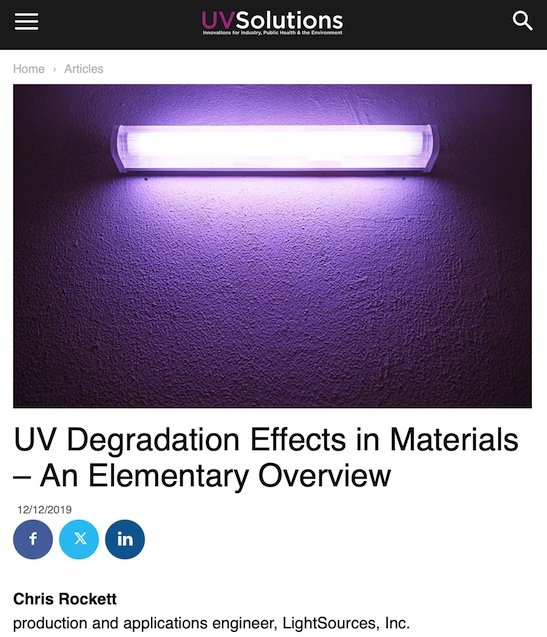
-----
Olive drab Chromate Coating
Cadmium, zinc & zinc alloy platings almost always receive a subsequent chromate conversion coating to deter white rust & premature corrosion. These chromate coatings (sometimes called 'passivation') can be clear to bluish color, iridescent yellow to honey color, or (mostly for military use) drab olive green. Conversion coatings were traditionally based on hexavalent chromium, with darker colors indicative of thicker coatings and greater corrosion resistance.
But hexavalent chromium is toxic & carcinogenic. Powered by environmental pressures and improved coating science, the industry gradually moved from hexavalent to trivalent chromium coatings. Some shops & specifiers changed early, some late, but the transition is pretty complete, with the center of the bell curve in the early 2000s. Trivalent conversion coatings are highly proprietary and constantly evolving, so their limitations as described twenty years ago probably don't apply today but, because of their complexity, meeting a color requirement like 'olive drab' can be an issue.
Q. Has anyone had any success developing a Trivalent Olive drab passivate ?
DDG- Nottingham UK
June 6, 2025
Tip: Readers are welcome to browse this site anonymously!
But its main purpose is to build worldwide camaraderie through sharing.
Those who believe in this might not engage with anonymous posters.
⇩ Related postings, oldest first ⇩
Q. Specified for this project are cadmium plated and protected with olive-drab chromate coating in accordance with FS QQ-P-35C [from DLA] , II, class 3. Is the olive drab coating of any use without the chromate coating? And would you have the same or equivalent protection with the chromate coating without the olive drab?
William JonesW.M.Schlosser - Virginia Beach, Virginia
2001
A. Hi William. In this case the 'olive drab' IS the 'chromate coating'. Chromates are available in clear, yellow, black, and olive drab. Of them all, the olive drab chromate affords the most corrosion protection because it is the thickest and contains the most hexavalent chromium compounds.

Ted Mooney, P.E.
Striving to live Aloha
finishing.com - Pine Beach, New Jersey
Ted is available for instant help
or longer-term assistance.
Q. Why is olive green passivation over Zinc plating on MS not as widely used as Yellow passivation over Zinc plating? Is it because of any technical reason or purely commercial reason?
Is this plating process RoHS (Restriction of Hazardous Substances) compliant?
Product Designer - Chennai, India
March 20, 2008
A. I think it is less popular for aesthetic and economic reasons, Suresh. Although gold or yellow chromate was traditionally slightly lower in corrosion resistance than olive drab, it was less expensive and some people would say more attractive (sometimes even used to mislead consumers into believing they are getting brass).
These days color doesn't mean much though because RoHS chromates must be hex-free. The color of the old chromates was largely dependent on how much hex chrome was in them. Today, any color is probably dye, and the less dye and other adulterants, the better they probably work.

Ted Mooney, P.E.
Striving to live Aloha
finishing.com - Pine Beach, New Jersey
Ted is available for instant help
or longer-term assistance.
A. Mr. Suresh, I would say for both: technical and commercial reason. Green passivation (in fact there is a family of green passivation: olive, olive-drab, military green, grey and so on) is more expansive than any common yellow one. The aspect is also important. After yellow passivation zinc deposit is still metallic, bright and attractive. Green passivation eliminates metallic brightness and the aspect becomes less attractive for users. Except military users, who prefer non-reflective greenish coatings with high corrosion resistance to mirror bright ones. That's clear why.
Janusz LABEDZ- Warsaw, Poland
March 31, 2008
Q. Well I have spent at least the better half of 3 days trying to figure why my green drab does not work. I strip the part, polish it up, degrease, do a water-break test. Then, after 30 minutes of plating, the minute the parts go into green drab solution they turn bronze. Using hobby kit trying 1 oz. part A and B to 1 quart of distilled water. Help!
Richard Budney- Weirton, West Virginia, USA
May 20, 2013
A. Richard, I'd suggest contacting the manufacturer of the hobby plating solution. Unless we have an actual chemical formula to look at, our solutions are going to be guesses at best.
Marc BanksBlacksmith - Boone, North Carolina, USA
June 12, 2013
Is Olive drab chromate UV-resistant?
Q. Can you please explain to me what the level of UV resistance is if Trivalent Clear Chromate (MFZn13TC) + Olive Chromate (MFZn 13 G) are used on an exterior vehicle component?
Derick Hickleycar mfgr - Pretoria South Africa
October 27, 2014
![]() Hi Derick. As a general rule, inorganic materials don't suffer UV degradation and organics do. But yours is an excellent question to which I don't know the answer. Sorry :-(
Hi Derick. As a general rule, inorganic materials don't suffer UV degradation and organics do. But yours is an excellent question to which I don't know the answer. Sorry :-(
Back in 2001, the color of olive drab chromate came from the hexavalent chrome in it; and olive drab was widely used on rough service military equipment, so I am quite confident of its UV resistance. But in these days of trivalent chromating, any coloration is probably just a dye, and organic dyes tend to not have much UV resistance -- so I'd love to know the answer myself :-)
Regards,

Ted Mooney, P.E.
Striving to live Aloha
finishing.com - Pine Beach, New Jersey
Ted is available for instant help
or longer-term assistance.
Danger of olive drab chromate?
Q. We are considering using the Olive Drab Chromate coating on two parts that are roll formed into an assembly. During the forming we are getting a little residue off the part.
Since the process uses Hexavalent Chromium, a known carcinogen, are there any safety issues with the residue on the parts and tooling to those coming in contact with the dust/flakes?
Manufacturing - Fremont, Ohio USA
December 31, 2019
A. Hi Tim. If your concern is only with a manufacturing process, any hazards are always manageable; we work with things far more dangerous than hexavalent chromium all the time, and any dust/flakes can be safely sequestered through some procedure or other.
If, however, people will be touching or otherwise exposed to this component later in its life, personally I would rethink it. Automobiles can be and are built without hexavalent chromium in/on them despite their thousands of parts and very severe environmental exposure -- so it can be done.
Plus there are numerous European restrictions against hexavalent chromium, and if sold in California it would have to be labeled. But finally, carcinogenicity is a statistical proposition, not a cause & effect thing for an individual case. So if a person touches this object and happens to contract cancer, there is no way to say that exposure to this component was or wasn't the cause ... but what can be said is that they were exposed to a substance which the authorities and statistics have determined/demonstrated to be carcinogenic.
Regards,

Ted Mooney, P.E. RET
Striving to live Aloha
finishing.com - Pine Beach, New Jersey
Ted is available for instant help
or longer-term assistance.
Q. Thanks for the quick response. If we can avoid hazards from the beginning, I'd rather take that path than have to deploy safety measures that could have been avoided.
I just wanted to verify that the flaking/residue from the coating is something we need to worry about. We are plating outside right from the die casting house. When we assemble, the dust is being created. I don't want that kind of hazard in our assembly area.
The product in the field is another concern.
Parts are zinc. The hexavalent chromium process appeared to be the most cost efficient means, as they are tumbled. Would you have another process to suggest that has similar economics and somewhat similar corrosion characteristics?
Are we going to have to rack parts in most coating processes?
Manufacturing - Fremont, Ohio USA
December 31, 2019
A. Hi again. Talk to your plating shop or the major plating process providers about the possibility of a trivalent chromate for these zinc diecast parts rather than the somewhat old-fashioned hexavalent chromate processes.
The dusting/flaking when processing is not entirely surprising: some people feel zinc diecastings should be zinc plated before chromating (but I am unfamiliar with roll forming of die castings, and I don't actually understand what is being asked of the components).
Small parts can usually be barrel-plated or chromated in a basket or barrel rather than requiring racking, but I don't have a good understanding of your particular parts.
Regards,

Ted Mooney, P.E. RET
Striving to live Aloha
finishing.com - Pine Beach, New Jersey
Ted is available for instant help
or longer-term assistance.
January 2020
Q, A, or Comment on THIS thread -or- Start a NEW Thread

